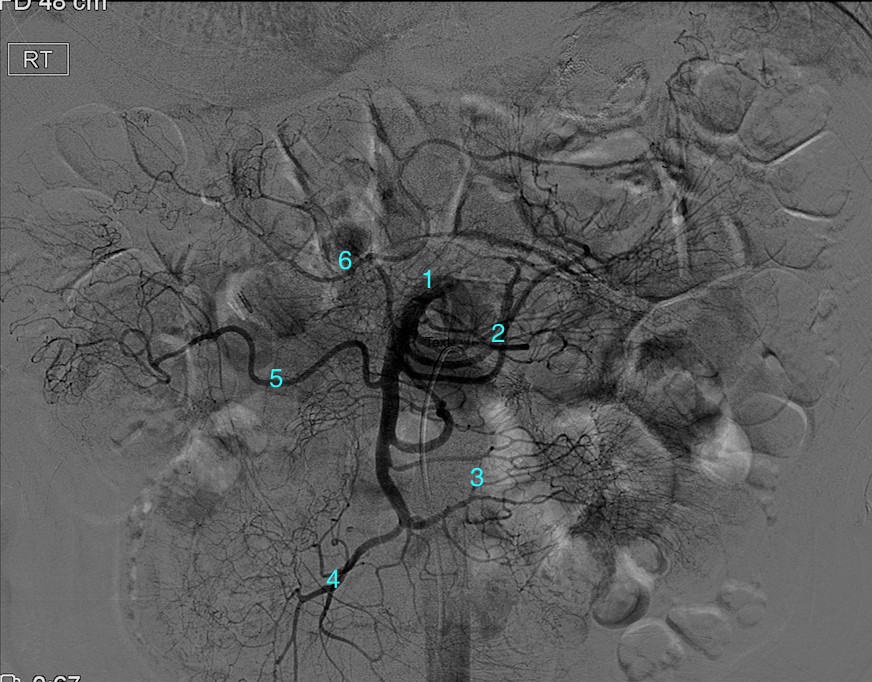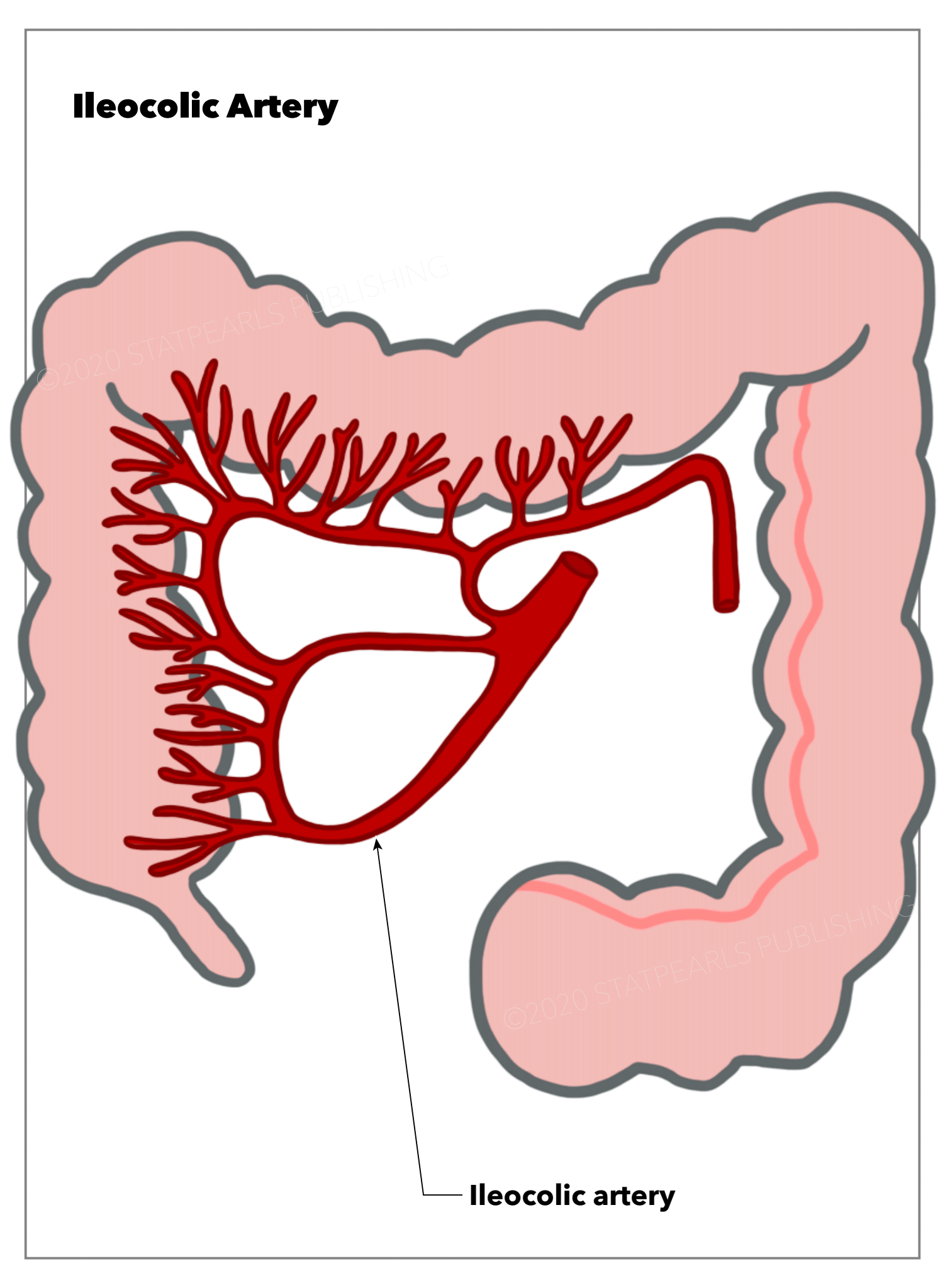[1]
Pan K. [Measures to anatomic variations of the colonic vessels in laparoscopic operations]. Zhonghua wei chang wai ke za zhi = Chinese journal of gastrointestinal surgery. 2013 Oct:16(10):944-6
[PubMed PMID: 24158864]
[2]
Sun HL, Wang W, Yao L, Chen SX, Ren A, Hu YY, Xu YY. [Preoperative evaluation of mesenteric vascular anatomy using 256 multi-slice computed tomography before laparoscopic surgery]. Zhonghua wei chang wai ke za zhi = Chinese journal of gastrointestinal surgery. 2011 Nov:14(11):855-8
[PubMed PMID: 22116719]
[3]
Charnsangavej C, DuBrow RA, Varma DG, Herron DH, Robinson TJ, Whitley NO. CT of the mesocolon. Part 1. Anatomic considerations. Radiographics : a review publication of the Radiological Society of North America, Inc. 1993 Sep:13(5):1035-45
[PubMed PMID: 8210588]
[4]
Haywood M,Molyneux C,Mahadevan V,Srinivasaiah N, Right colic artery anatomy: a systematic review of cadaveric studies. Techniques in coloproctology. 2017 Dec;
[PubMed PMID: 29196959]
Level 1 (high-level) evidence
[5]
Gamo E, Jiménez C, Pallares E, Simón C, Valderrama F, Sañudo JR, Arrazola J. The superior mesenteric artery and the variations of the colic patterns. A new anatomical and radiological classification of the colic arteries. Surgical and radiologic anatomy : SRA. 2016 Jul:38(5):519-27. doi: 10.1007/s00276-015-1608-3. Epub 2016 Jan 4
[PubMed PMID: 26728989]
[6]
Kuzu MA, İsmail E, Çelik S, Şahin MF, Güner MA, Hohenberger W, Açar Hİ. Variations in the Vascular Anatomy of the Right Colon and Implications for Right-Sided Colon Surgery. Diseases of the colon and rectum. 2017 Mar:60(3):290-298. doi: 10.1097/DCR.0000000000000777. Epub
[PubMed PMID: 28177991]
[7]
Mike M, Kano N. Reappraisal of the vascular anatomy of the colon and consequences for the definition of surgical resection. Digestive surgery. 2013:30(4-6):383-92. doi: 10.1159/000343156. Epub 2013 Oct 10
[PubMed PMID: 24135859]
[9]
Timmermans JP, Hens J, Adriaensen D. Outer submucous plexus: an intrinsic nerve network involved in both secretory and motility processes in the intestine of large mammals and humans. The Anatomical record. 2001 Jan 1:262(1):71-8
[PubMed PMID: 11146430]
[10]
Pollard MF, Thompson-Fawcett MW, Stringer MD. The human ileocaecal junction: anatomical evidence of a sphincter. Surgical and radiologic anatomy : SRA. 2012 Jan:34(1):21-9. doi: 10.1007/s00276-011-0865-z. Epub 2011 Aug 24
[PubMed PMID: 21863224]
[11]
Liu X, Yu HK, Gu LX, Chen JK, Wen ZB. Atropine Premedication Facilitates Ultrasound-Guided Reduction by Saline Enema in Children With Intussusception. Frontiers in pharmacology. 2019:10():43. doi: 10.3389/fphar.2019.00043. Epub 2019 Jan 31
[PubMed PMID: 30766486]
[12]
Gollub MJ. Colonic intussusception: clinical and radiographic features. AJR. American journal of roentgenology. 2011 May:196(5):W580-5. doi: 10.2214/AJR.10.5112. Epub
[PubMed PMID: 21512048]
[13]
Applegate KE. Clinically suspected intussusception in children: evidence-based review and self-assessment module. AJR. American journal of roentgenology. 2005 Sep:185(3 Suppl):S175-83
[PubMed PMID: 16120899]
[14]
Klein EJ, Kapoor D, Shugerman RP. The diagnosis of intussusception. Clinical pediatrics. 2004 May:43(4):343-7
[PubMed PMID: 15118777]
[15]
Kamiya C, Deguchi J, Kitaoka T, Suzuki J, Abe K, Sato O. Obstruction of the superior mesenteric artery due to emboli from the thoracic aorta in a patient with thromboangiitis obliterans. Annals of vascular diseases. 2014:7(3):320-4. doi: 10.3400/avd.cr.14-00035. Epub 2014 Jul 30
[PubMed PMID: 25298837]
[16]
Sakai A, Hara H, Nakamura M. Successful endovascular treatment for simultaneous multiple thromboemboli following myocardial infarction. The Journal of invasive cardiology. 2013 Jun:25(6):E133-5
[PubMed PMID: 23735368]
[17]
Bastuev NV, Bekenov BM, Ivankov VT. [Isolated rupture of the ileocolic artery in blunt trauma to the abdomen]. Sudebno-meditsinskaia ekspertiza. 1976 Oct-Dec:19(4):47
[PubMed PMID: 1014059]
[18]
Kaye TL, West NP, Jayne DG, Tolan DJ. CT assessment of right colonic arterial anatomy pre and post cancer resection - a potential marker for quality and extent of surgery? Acta radiologica (Stockholm, Sweden : 1987). 2016 Apr:57(4):394-400. doi: 10.1177/0284185115583033. Epub 2015 May 4
[PubMed PMID: 25940063]
Level 2 (mid-level) evidence


